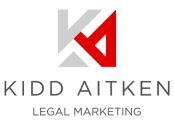Employers have a variety of reasons for using employee photos, including:
- internal company use (for a company directory or in the break room);
- external use (such as the company website or a blog post—you’ll find my picture below);
- for safety precautions (name badges or scan cards); and
- for commercial use in advertisements or marketing.
Employees are usually amendable to having their picture taken. But, there may be a few who express their genuine disinterest in being photographed. Such employees could simply be camera shy; others may have a more serious reason to refuse to have an image published. Some may need to protect anonymity for personal reasons, such as past domestic abuse. Others may adhere to religions forbidding taking pictures.
There are generally no legal ramifications for using employee photos, unless it is for commercial purposes. Most states, including Kentucky, have laws that require permission before using an individual or their “likeness” for commercial purposes. This is due to the commonly held notion that a person has property rights in his or her name and likeness and those rights should be shielded from exploitation. Kentucky’s law is codified in KRS 391.170.
If you need to use employee photos for a commercial use, there is a simple solution. Have employees sign releases in which they acknowledge that their picture may be used in a company advertisement and they will receive no compensation for the use of their photo. Keep these releases on file.
Even in a state where consent is not required, it is always a smart approach to use a release so that employees will not be surprised when they see their face plastered on a promotional piece. If minors appear in the commercial materials always use extra caution. Use a consent form, whether required or not, to be signed by the child’s parents.
A warning about taking photos of potential employees: if you take photographs of applicants applying for a job (to help remember who’s who), it may put you at risk for a discrimination claim. A photograph creates a record of certain protected characteristics (i.e., sex, race, or the presence of a disability) that employers generally cannot use in hiring considerations. If this information is collected and a discrimination claim arises, the burden will be on the employer to prove the photographs were not used to make a discriminatory employment decision.
I will leave you with a little common sense about employee photos. Always remember to publicize when the office picture day will be; no one likes showing up ill-prepared. Offer a “redo day” for those who are truly unhappy about how their picture turned out. If all else fails, resort to photoshopping. A little lighting adjustment or cropping can work wonders for a shutterbug humbug.


 />i
/>i

